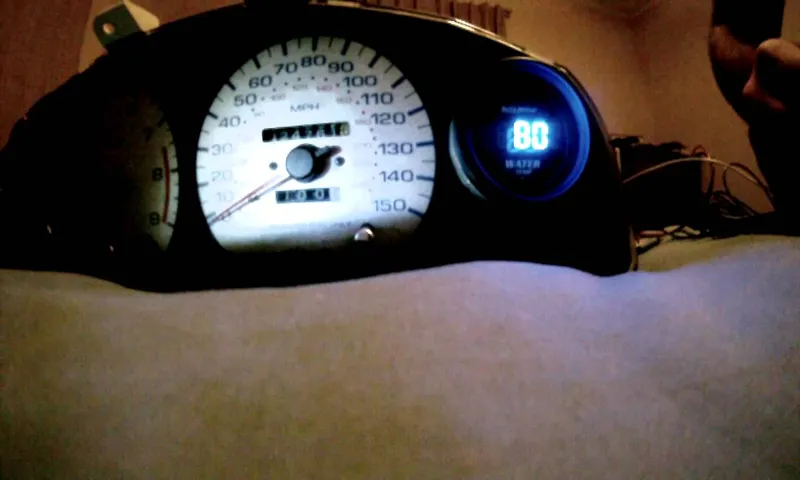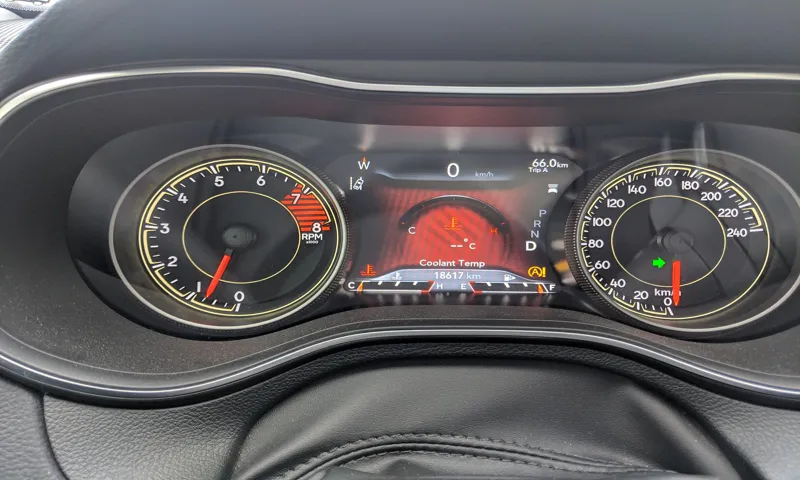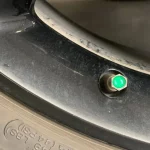Have you ever been driving along, minding your own business, when suddenly your coolant gauge starts creeping into the red? Panic sets in as you try to decipher why this little needle is causing such a commotion. Is your engine about to overheat? Are you going to be stranded on the side of the road? Understanding your coolant gauge is essential for every car owner. It’s like having a built-in temperature gauge for your engine, alerting you to any potential issues.
Just like a fever indicates that something is wrong with our bodies, the coolant gauge lets us know if our engine is running too hot. Think of your coolant gauge as a traffic light. When it’s in the green zone, everything is running smoothly.
You can cruise along without a care in the world. But as that needle starts inching towards the red zone, it’s like approaching a yellow light. It’s a warning sign telling you to slow down and address the issue before it turns into a full-blown problem.
So, what should you do if your coolant gauge starts creeping into the red? First and foremost, don’t ignore it. Your engine could be on the brink of overheating, which can cause serious damage. Pull over to a safe spot as soon as possible and turn off your engine.
Pop the hood and take a look at your coolant level. Is it low? If so, you may have a leak somewhere in your cooling system. Check the hoses and radiator for any signs of damage or cracks.
If you can’t find the source of the leak, it’s best to call a professional to have it inspected. On the other hand, if your coolant level is fine, you may have a malfunctioning thermostat or a clogged radiator. These issues can prevent the coolant from effectively cooling down your engine.
Table of Contents
What Does the Coolant Gauge Measure?
One of the most important gauges on your car’s dashboard is the coolant gauge. This gauge measures the temperature of the engine coolant, which is crucial for keeping your engine running smoothly and preventing overheating. The coolant gauge should ideally be in the middle of the gauge range, indicating that the engine is operating at a normal temperature.
If the coolant gauge is too low, it could mean that there is a problem with the cooling system, such as a coolant leak or a malfunctioning thermostat. On the other hand, if the coolant gauge is too high, it could indicate that the engine is overheating, which can cause serious damage to the engine if not addressed promptly. It is important to pay attention to the coolant gauge and address any issues with the cooling system to ensure the longevity and performance of your vehicle.
Introduction to the Coolant Gauge
coolant gauge, measure, vehicle’s coolant temperature, engine overheating, coolant level, engine health, sensor The coolant gauge is an essential component of a vehicle’s dashboard. It provides information about the temperature of the engine coolant, which is crucial for maintaining engine health. The gauge measures the temperature of the coolant and displays it on the dashboard for the driver to see.
By monitoring the coolant temperature, drivers can be alerted to potential issues with the engine, such as overheating. If the coolant gauge indicates that the temperature is rising to unsafe levels, it may be a sign that the engine is overheating. In such cases, it is important to pull over and allow the engine to cool down.
The coolant gauge can also give an indication of the coolant level in the engine. If the gauge consistently shows a low coolant temperature, it may be a sign that there is a leak or another issue with the coolant system. Monitoring the coolant gauge regularly can help prevent engine damage and ensure the vehicle is running efficiently.

The Purpose of the Coolant Gauge
The purpose of the coolant gauge in your car is to measure the temperature of the engine coolant. This is important because the engine coolant plays a crucial role in keeping your engine running smoothly and preventing it from overheating. When the coolant gauge is in the normal range, it means that the engine is operating at the optimal temperature.
However, if the gauge starts to creep into the hot zone, it is a warning sign that the engine is overheating and immediate action should be taken. Ignoring an overheating engine can lead to serious damage and expensive repairs. So, the coolant gauge serves as a crucial tool in helping you monitor the health of your engine and prevent potential problems before they occur.
Where Should the Coolant Gauge Be?
Where should the coolant gauge be? This is a question many drivers may have, especially if they notice their coolant gauge reading higher or lower than usual. The coolant gauge, also known as the temperature gauge, is an important component of the vehicle’s cooling system. It helps to monitor the temperature of the engine coolant, which is crucial for preventing overheating and maintaining optimal engine performance.
In most cars, the coolant gauge should be positioned in the middle of the gauge range when the engine is at normal operating temperature. This indicates that the engine is running at its intended operating temperature. If the coolant gauge is reading too high or too low, it could be a sign of a cooling system problem that should be addressed promptly.
It is always a good idea to refer to your vehicle’s owner’s manual for specific information about the coolant gauge placement in your particular car model.
Finding the Coolant Gauge Location
coolant gauge location, car dashboard, engine temperature, overheating, thermometer Have you ever wondered where the coolant gauge is located on your car’s dashboard? The coolant gauge is an essential component of your vehicle’s instrument cluster as it provides important information about the engine temperature. When the engine gets too hot, it can lead to overheating and potential damage to the engine. So, it’s crucial to keep an eye on the coolant gauge to ensure that your car is running at the optimal temperature.
But finding the coolant gauge location can sometimes be a bit confusing, as it varies from car to car. In most vehicles, the coolant gauge is typically located within the instrument cluster, near the speedometer and fuel gauge. It is often represented by a thermometer icon or a series of bars indicating the temperature.
Some cars may also have a separate digital display for the coolant temperature. So, the next time you hop in your car, take a moment to familiarize yourself with the coolant gauge location, and remember to keep an eye on it to prevent any potential overheating issues.
Coolant Gauge Placement in Different Vehicle Models
coolant gauge placement, vehicle models, location of coolant gauge, dashboard, instrument panel, car models, different car brands, position of coolant gauge, easy visibility, coolant temperature, engine health, overheating, gauge design, driver’s line of sight, essential information, driving experience
How Does the Coolant Gauge Work?
When it comes to monitoring the temperature of your vehicle’s engine, the coolant gauge plays a crucial role. This gauge measures the temperature of the coolant, which is responsible for regulating the engine’s operating temperature. Ideally, the coolant gauge should be in the middle position or slightly below it, indicating that the engine is running at the optimal temperature.
If the needle on the coolant gauge is too low, it means that the engine is running cold, which can lead to poor fuel efficiency and increased wear on engine components. On the other hand, if the gauge is in the red zone or close to it, it indicates that the engine is overheating, which can cause severe damage if not addressed promptly. Therefore, it is essential to keep a close eye on the coolant gauge and take necessary actions if it deviates from the optimal range.
Coolant Gauge Components
coolant gauge components, how does the coolant gauge work
Coolant Gauge Operation
coolant gauge, coolant temperature, engine temperature, overheating How Does the Coolant Gauge Work? Have you ever wondered how your car’s coolant gauge works? It’s a small but important component of your vehicle’s dashboard, as it provides you with crucial information about the temperature of your engine. The coolant gauge is connected to a sensor that measures the temperature of the engine coolant. As the engine heats up, the temperature of the coolant also rises.
This change in temperature is then reflected on the coolant gauge in the form of a needle or digital display. The gauge typically has a range of temperatures, with a “C” or “H” at the ends indicating cold and hot respectively. As you drive, the needle or digital display will move towards the middle or stay within a certain range, indicating that the engine is running at its optimal temperature.
However, if the needle moves towards the “H” or the digital display shows that the engine is overheating, it’s a sign that there may be a problem with the cooling system. Keeping an eye on your coolant gauge is essential to prevent engine damage from overheating. So the next time you’re driving and notice the needle moving beyond the normal range, it’s time to pull over and let your engine cool down before further damage occurs.
Interpreting the Coolant Gauge
Have you ever wondered where the coolant gauge in your car should be? Understanding how to interpret your vehicle’s coolant gauge is essential for maintaining the health of your engine. Typically, the coolant gauge is located on the dashboard and is represented by a temperature scale ranging from cold to hot. It is important to note that the specific position of the gauge may vary depending on the make and model of your vehicle.
When you first start your car, the coolant gauge should be at or near the “C” or cold mark. As you drive, the gauge should gradually move towards the middle of the temperature scale, indicating that your engine is operating at a proper temperature. If the gauge moves too high towards the “H” or hot mark, it is an indication that your engine is overheating and immediate action needs to be taken.
This could include pulling over and allowing the engine to cool down or contacting a mechanic for assistance. Regularly monitoring your coolant gauge can help prevent engine damage and keep your car running smoothly.
Normal Coolant Gauge Readings
normal coolant gauge readings Do you ever glance at your car’s dashboard and see the coolant gauge hovering in a range of temperatures? Have you ever wondered what these readings actually mean? The coolant gauge is a vital tool in ensuring that your engine is running at the right temperature for optimal performance. When the engine is cold, the gauge should read low, as the coolant hasn’t had a chance to warm up. As you start driving and the engine warms up, the gauge should gradually rise to a middle point.
This is the ideal operating temperature for your engine and indicates that the cooling system is working effectively. If the gauge goes too high or too low, it could be a sign of a cooling system issue that needs to be addressed. So, next time you glance at your coolant gauge, remember that it’s your engine’s way of communicating with you, ensuring that everything is running smoothly under the hood.
Stay cool, and happy driving!
Warnings and Abnormal Coolant Gauge Readings
coolant gauge readings
Maintaining Your Coolant System
Have you ever found yourself wondering where the coolant gauge on your vehicle should be? Well, let me break it down for you. The coolant gauge is an important component of your vehicle’s coolant system, as it helps to monitor the temperature of the engine. Ideally, the coolant gauge should be in the middle, or slightly below the middle, of the temperature range when the engine is running at normal operating temperature.
This indicates that the coolant is circulating properly and that the engine is running at the optimum temperature. If the coolant gauge is consistently reading higher or lower than the normal range, it could be a sign of a problem with your coolant system. It is important to address any issues with your coolant system promptly, as overheating can cause serious damage to your engine.
Regular maintenance and inspections of your coolant system, including checking the coolant level and condition, can help to ensure that your vehicle’s cooling system is functioning properly and prevent any potential issues. So, the next time you check your coolant gauge, make sure it’s sitting right where it should be, keeping your engine cool and running smoothly.
Regular Coolant Inspections and Flushes
coolant system maintenance, regular coolant inspections, coolant flushes Regular coolant inspections and flushes are essential for maintaining the health and longevity of your vehicle’s coolant system. Your coolant system plays a vital role in keeping your engine at a safe operating temperature, preventing overheating and potential engine damage. Over time, coolant can become contaminated with dirt, debris, and other particles that can hinder its ability to effectively cool your engine.
By inspecting and flushing your coolant system regularly, you can ensure that it is free from any buildup or blockages and operating at peak efficiency. Think of it as a detox for your engine, where all the impurities are flushed out, allowing your coolant to do its job properly. So, next time you take your car in for maintenance, make sure to ask for a coolant inspection and flush.
Your engine will thank you for it.
Troubleshooting Coolant Gauge Issues
coolant gauge, coolant system, troubleshooting, maintaining coolant
Conclusion
When it comes to the eternal question of where the coolant gauge should be, we must navigate through the depths of automotive confusion to find our answer. Much like a wise sailor traversing treacherous seas, we seek to find equilibrium in the realm of temperature regulation. Picture this: you’re driving down the road, the wind in your hair and the radio blasting your favorite tunes.
Life is good. But then, a wild thought enters your mind, “Where should the coolant gauge be?” Panic sets in, and you find yourself questioning your automotive knowledge. Fear not, fellow adventurers! The coolant gauge, that mystical dial on your dashboard, is not a mere decoration.
It serves a valuable purpose: to inform you of the temperature of your engine. It is your trusted guide, leading you away from the treacherous path of overheating and into the serene realm of optimal temperature. But where should this gauge be? Should it reside in the land of “C” for Cold, where the engine barely wakes from its slumber? Should it venture into the realm of “H” for Hot, where danger lurks and fiery pits await? No, my friends, it should rest comfortably in the middle, in the oasis of “Normal.
” Why, you may ask? Well, think of it this way: would you want to live in a world of extremes? Where it’s either scorching hot or freezing cold? No, of course not. We humans thrive in moderation, and so does your engine. The optimal temperature range is where your engine is happiest, just like Goldilocks finding the perfect bowl of porridge (but without any curious bears involved, hopefully).
So, let us rejoice in the center, the equilibrium of the coolant gauge. Embrace the balance, for it is here that your engine functions at its best. Remember, my dear drivers, that your coolant gauge is not to be neglected or taken lightly.
It is a symbol of harmony, reminding us to keep our engines cool but not frozen, warm but not overheated. Now, take to the road with confidence and let your coolant gauge be your compass. Trust in its wisdom and find solace in the middle, where the gauge rests peacefully in the realm of “Normal.
FAQs
What is the purpose of a coolant gauge?
The purpose of a coolant gauge is to indicate the temperature of the engine coolant. It helps monitor the engine’s temperature to prevent it from overheating.
What are the normal operating temperatures for a coolant gauge?
The normal operating temperature for a coolant gauge is typically between 190°F (88°C) and 220°F (104°C). However, it may vary depending on the vehicle model and manufacturer’s specifications.
Where should the coolant gauge be positioned on the dashboard?
The coolant gauge is usually positioned on the dashboard alongside other gauges, such as the speedometer and fuel gauge. However, the specific location may vary depending on the vehicle make and model.
What should I do if the coolant gauge is reading higher than normal?
If the coolant gauge is reading higher than normal, it indicates that the engine is running hot. In such a case, it is important to immediately pull over to a safe location and allow the engine to cool down. Additionally, check the coolant level and radiator for any leaks or blockages.
Can a faulty coolant gauge give inaccurate readings?
Yes, a faulty coolant gauge can give inaccurate readings. It could either show that the engine is running hotter or cooler than it actually is. If you suspect a malfunctioning coolant gauge, it is recommended to have it inspected and repaired by a qualified mechanic.
Is it normal for the coolant gauge to fluctuate while driving?
It is normal for the coolant gauge to slightly fluctuate while driving, especially in response to changes in the vehicle’s speed or engine load. However, drastic or constant fluctuations could indicate a cooling system issue that needs attention.
What are the consequences of an overheated engine?
An overheated engine can lead to serious damage, such as blown gaskets, warped cylinder heads, or even a cracked engine block. It is important to address any cooling system issues promptly to prevent costly repairs and potential engine failure.



